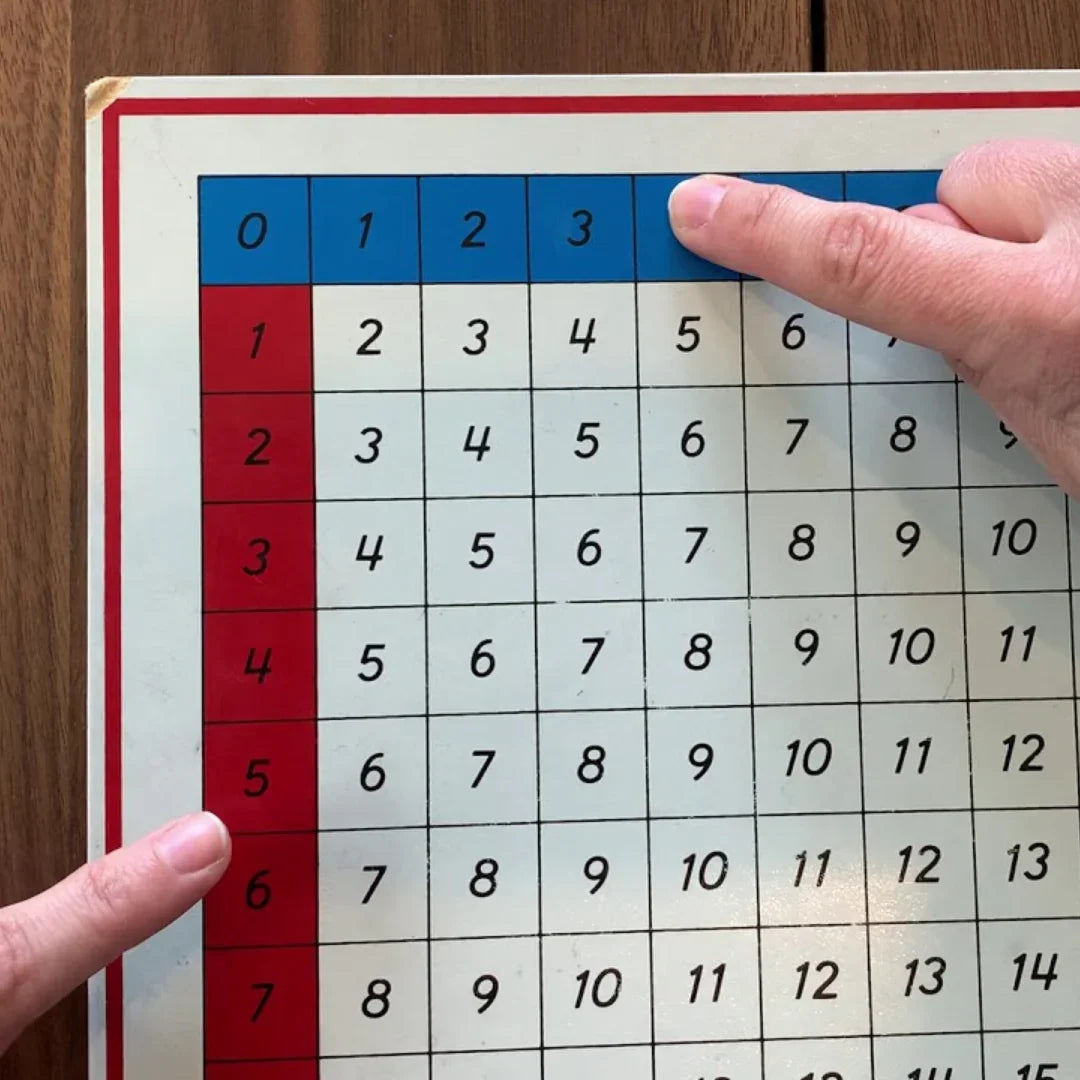The addition chart is a visual representation of basic addition facts. It offers a structured approach for children to explore number patterns and develop fluency in basic arithmetic. By interacting with the chart, children build a solid arithmetic foundation, setting the stage for future mathematical success.
Aim
- To provide the child with repeated practice of essential number combinations from 1+1 to 9+9, helping them memorize these fundamental sums.
- Memorization of the essential combinations of addition
How It Works
The addition chart consists of a grid with numbers arranged horizontally and vertically. The intersections of these numbers display the corresponding sums. This visual layout helps children to:
- Identify number patterns: Children can discover patterns and relationships between numbers.
- Master basic facts: Regular exposure to the chart reinforces addition facts, leading to memorization.
- Develop mental math skills: With practice, children can visualize the chart and calculate sums mentally.
The Learning Process
Introducing the addition chart should be a gradual and engaging process. Begin with simple combinations and gradually increase the complexity. Encourage children to explore the chart independently, and provide guidance when needed.
Key steps in the learning process:
- Introduction: Familiarize the child with the layout of the chart.
- Finger placement: Demonstrate how to use fingers to locate numbers on the chart.
- Finding sums: Guide the child in finding sums by following the rows and columns.
- Pattern recognition: Encourage the child to identify patterns and relationships between numbers.
- Memorization: Practice addition facts regularly to strengthen memory.
Extending Learning
To make the most of the addition chart, incorporate these activities:
- Chart-based games: Create games that involve finding numbers, sums, or patterns on the chart.
- Storytelling with numbers: Create stories based on addition facts to make learning engaging.
- Real-life connections: Relate addition facts to real-life situations to enhance understanding.

Benefits of the Addition Chart
The addition chart offers several advantages:
- Visual learning: The chart provides a visual representation of number relationships.
- Efficiency: Quick reference for addition facts, saving time during calculations.
- Confidence building: Mastery of basic facts boosts children's mathematical confidence.
- Foundation for higher math: A solid grasp of addition is crucial for understanding more advanced mathematical concepts.
By incorporating the addition chart into early math education, we equip children with the tools they need to excel in mathematics.
Montessori Inspired Toy Collection - Introduce your child to the joy of learning with our Montessori-inspired toy collection. Crafted from high-quality beech wood and soft knitted cotton, these safe and sustainable toys are finished with non-toxic paints, making them perfect for imaginative play and developmental growth.










